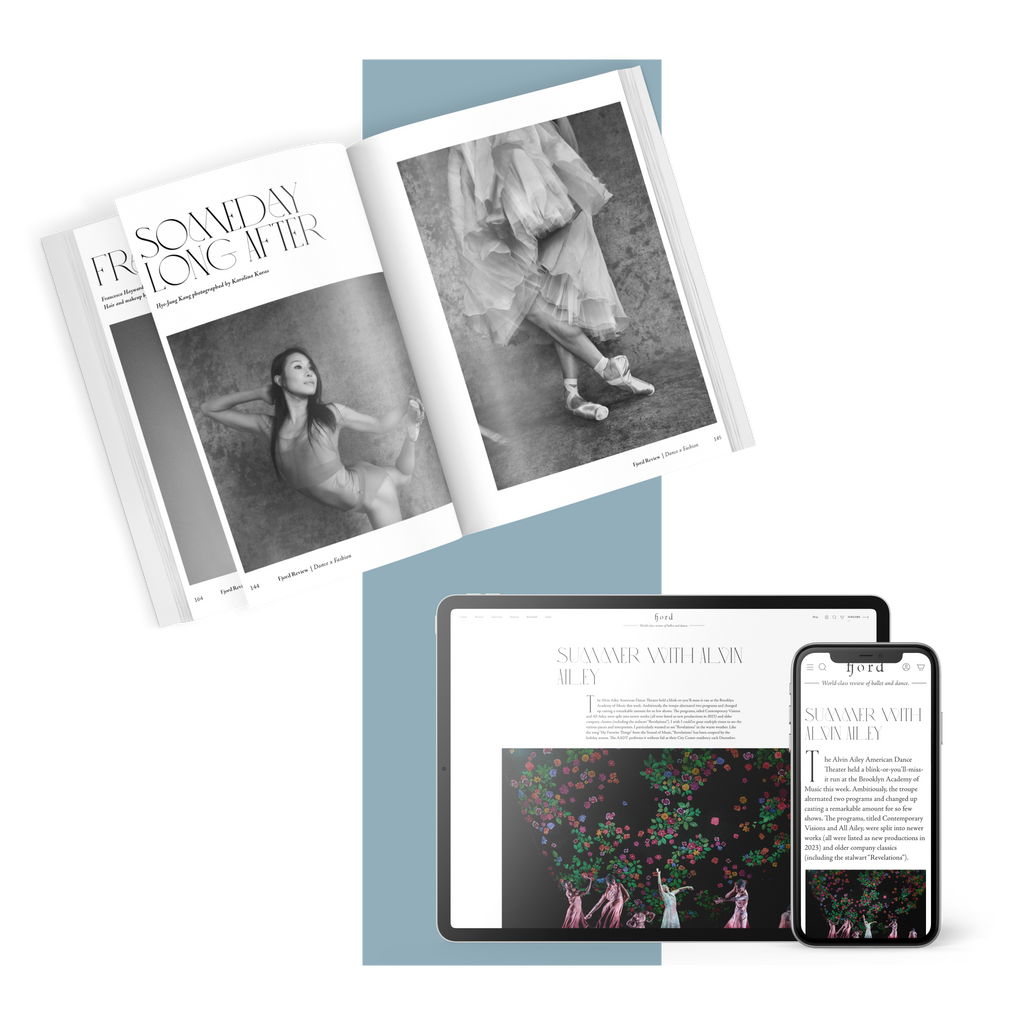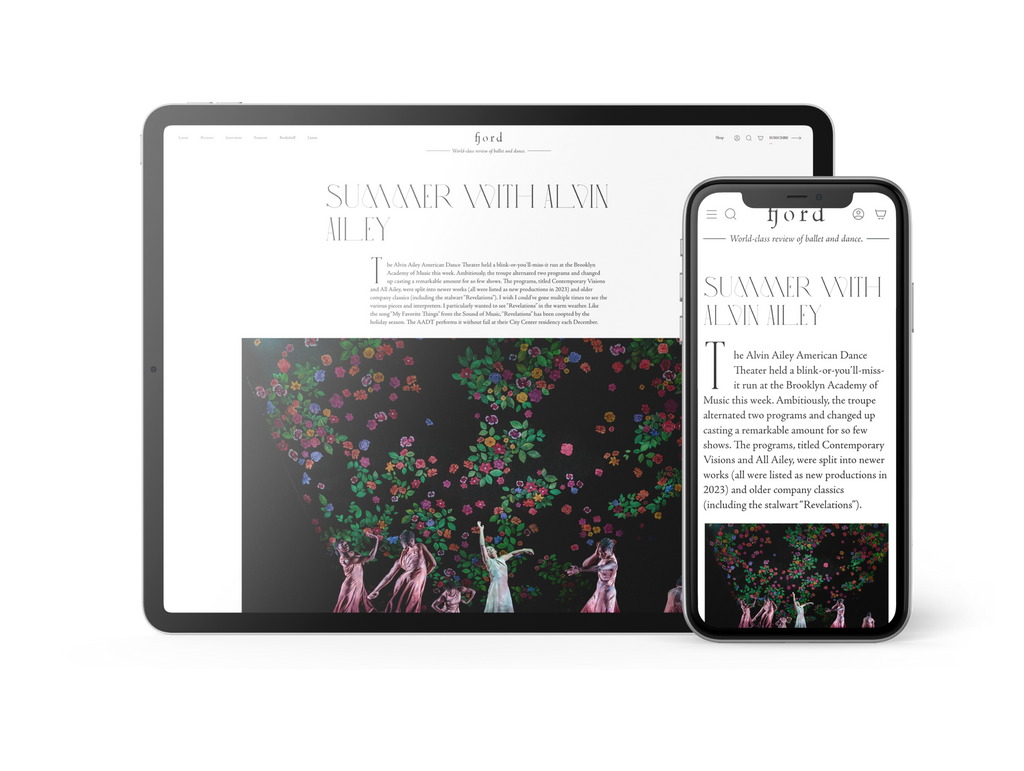Côté, who was appointed choreographic associate with the National Ballet in 2013, shows considerable style with “Being and Nothingness” as well as choreographic interest. There's something a little unbridled, a bit raw, and it's refreshing to see. The stage was ripped open, minimalist, as might be expected for a ballet after Jean Paul Sartre's essay. A single lightbulb hung middle front, just higher than Greta Hodgkinson's reach, and she danced a lucid, cold solo, “The Light” in its glow, occasionally referencing it, calling to it, and it would now and then respond. Is anyone out there?
The abstract use of objects—there were several others delicately suspended on wires, a mirror here, the corner of a painting—were objects of torment for our characters. This is existentialism at your feet; made vivid in the bedroom, the bathroom, living room. After she's finished with the lightbulb, Hodgkinson turns to a figure lying on a bed. And yet, we find her rehearsing, recounting something obsessively to herself in the depths of the night as though alone. This is a false lead—the next section reveals not one but two figures in the bed.
And so it builds, piece by piece. There is a brilliant and unsettling telephone motif, and another involving a carpet in “The Living Room,” danced with raw intensity by Svetlana Lunkina and Brent Parolin. And a favourite, and the cheers were loud at curtain call, Dylan Tedaldi in moment of angst featuring a bathroom sink. The dancers were riveting, as much for their faces as the no-room-for-error dance phrases; Kathryn Hosier and Jack Bertinshaw being highlights.
In a final phrase, a corps of men, shirtless in dark grey suits jackets and homburgs, expanded the scene, colluding with the opened set by hanging deep upstage, murmuring with their elbows, until gradually being drawn forth for a vignette entitled “The Street” that included a cool quintuple pirouette from Francesco Gabriele Frola.
“Being and Nothingness” while occasionally overstaying its welcome, but very occasionally, shows great choreographic promise, and I look forward to seeing more from Côté as he progresses.









comments